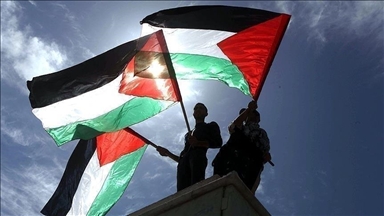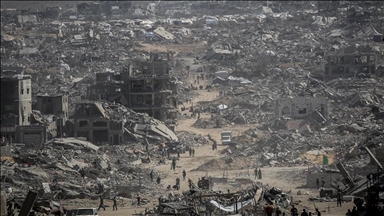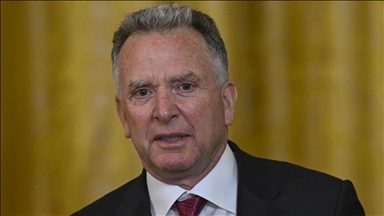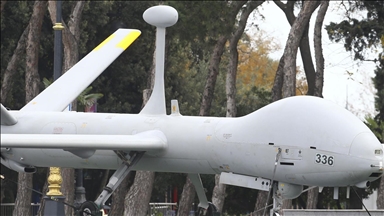Families in Gaza search for traces of loved ones among bodies returned by Israel
At Nasser Hospital, families and medical teams struggle to identify remains of Palestinians handed over by Israel without names, many showing signs of torture and burning
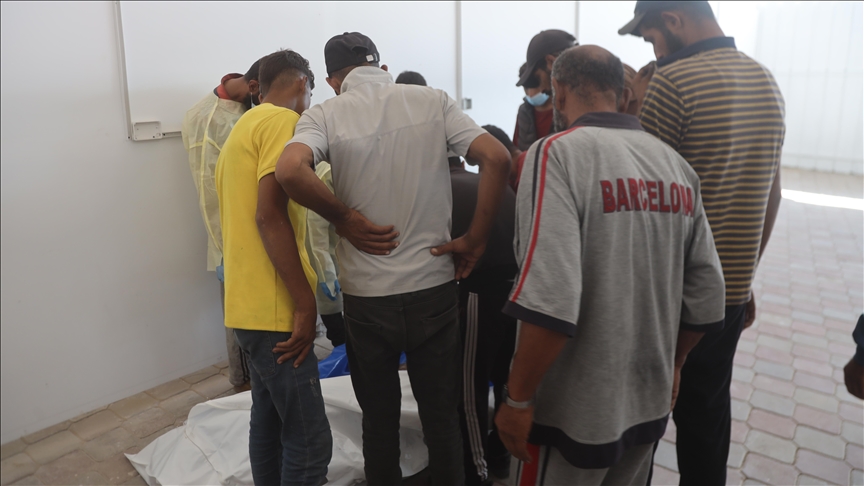
GAZA CITY, Palestine/ISTANBUL
Inside a small hall at the Nasser Hospital in southern Gaza, Health Ministry teams and families are making a painstaking effort to make preliminary identifications of bodies returned by Israel without names.
Families gather around a large screen set up by the ministry, staring at difficult images displayed with numerical codes, hoping to find a single clue that could lead them to those they lost months ago.
The room is silent, broken only by the sighs of grieving parents, as people study the distorted faces, many bearing signs of torture and burning.
Ismail al-Thawabta, director of the Government Media Office in Gaza, told Anadolu that the ministry received through the International Committee of the Red Cross (ICRC) the remains of 120 unidentified Palestinians in three batches.
He said some of the bodies bore marks of torture, burns, and field executions, while Israel provided no data or names, making identification a nearly impossible task.
After a long wait, Akram al-Manasrah identified the body of one of his two missing sons.
“I lost my sons Abdullah and Khaled, on Oct. 7, 2023,” he told Anadolu. “When we heard that Israel returned bodies, I came to the hospital hoping to recognize them.”
“Like all Palestinian families, I am searching for our children who went missing during the war. His facial features were unclear because of the torture inflicted by the enemy (Israel),” he added.
Holding back tears, Manasrah said: “The face was disfigured by torture, but I recognized him from a mole near his nose and the shape of his teeth.”
Authorities in Gaza estimate around 9,500 people remain missing, some likely still under the rubble, while the fate of others remains unknown.
Bodies labeled with codes
Ahmad Dhahir, director of forensic medicine at the Nasser Hospital, told Anadolu that Israel handed over the bodies through the Red Cross without names, only marked with numbered codes.
“The bodies were numbered from 1 to 90,” he said, adding that identifying them by basic visual methods is nearly impossible. “We have no laboratories, no testing tools, and Israel provides no data.”
He said only three names were received so far, two of which were unclear and one still unverified.
The bodies were examined “by forensic medicine to determine build, height, injuries, wounds, and cause of death if possible, and to check for bullet traces or other evidence for the forensic department,” he added.
Due to the lack of scientific tools, the Health Ministry launched an online portal showing select, censored photos of the bodies, “respecting the deceased’s dignity and privacy,” to help families identify missing relatives remotely, Dhahir said.
“If there’s a suspected match, the family is called to Nasser Medical Complex for in-person identification. Once identification is confirmed, procedures are completed by the public prosecutor’s office and the medical investigation unit, and the body is handed over to the family,” he explained.
He added that bodies not identified within five days of arrival will be buried by the Awqaf Ministry following mapped burial records, ensuring each site is documented and traceable by its assigned number.
Before the ceasefire, Israel held 735 Palestinian bodies in so-called “cemeteries of numbers,” according to the Palestinian National Campaign to Retrieve Martyrs’ Bodies and Discover the Fate of the Missing.
Besides, the campaign cited a Haaretz report published on July 16, 2024, revealing that the Israeli army has been holding about 1,500 bodies of Palestinians from Gaza at the notorious Sde Teiman military base in southern Israel.
The “cemeteries of numbers” are unmarked burial sites enclosed by stones, with each grave marked only by a metal plate bearing a number instead of a name. Each number corresponds to a file kept by Israeli security authorities.
Hamas released 20 living Israeli hostages and handed over the remains of 10 more captives in exchange for nearly 2,000 Palestinian prisoners under the ceasefire agreement.
The deal was reached between Israel and Hamas last week, based on a plan presented by US President Donald Trump. Phase one included the release of Israeli hostages in exchange for Palestinian prisoners. The plan also envisages the rebuilding of Gaza and the establishment of a new governing mechanism without Hamas.
Since October 2023, Israeli attacks have killed nearly 68,000 Palestinians in Gaza, most of them women and children, and rendered it largely uninhabitable.
Anadolu Agency website contains only a portion of the news stories offered to subscribers in the AA News Broadcasting System (HAS), and in summarized form. Please contact us for subscription options.


